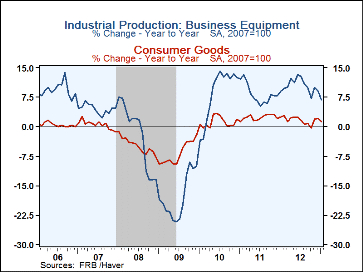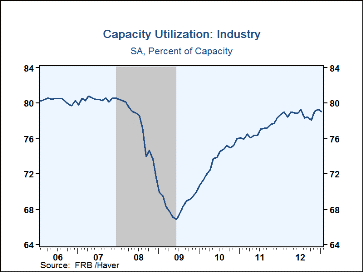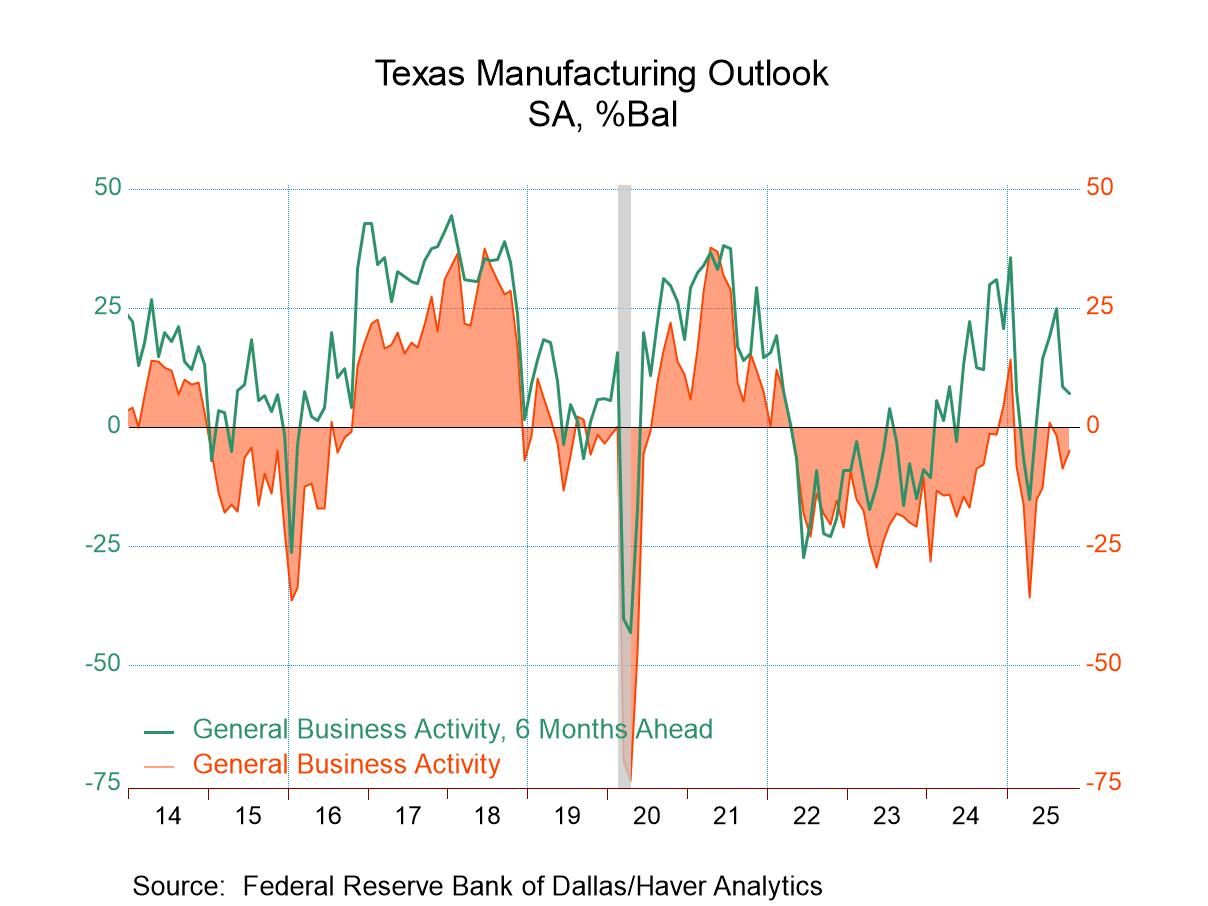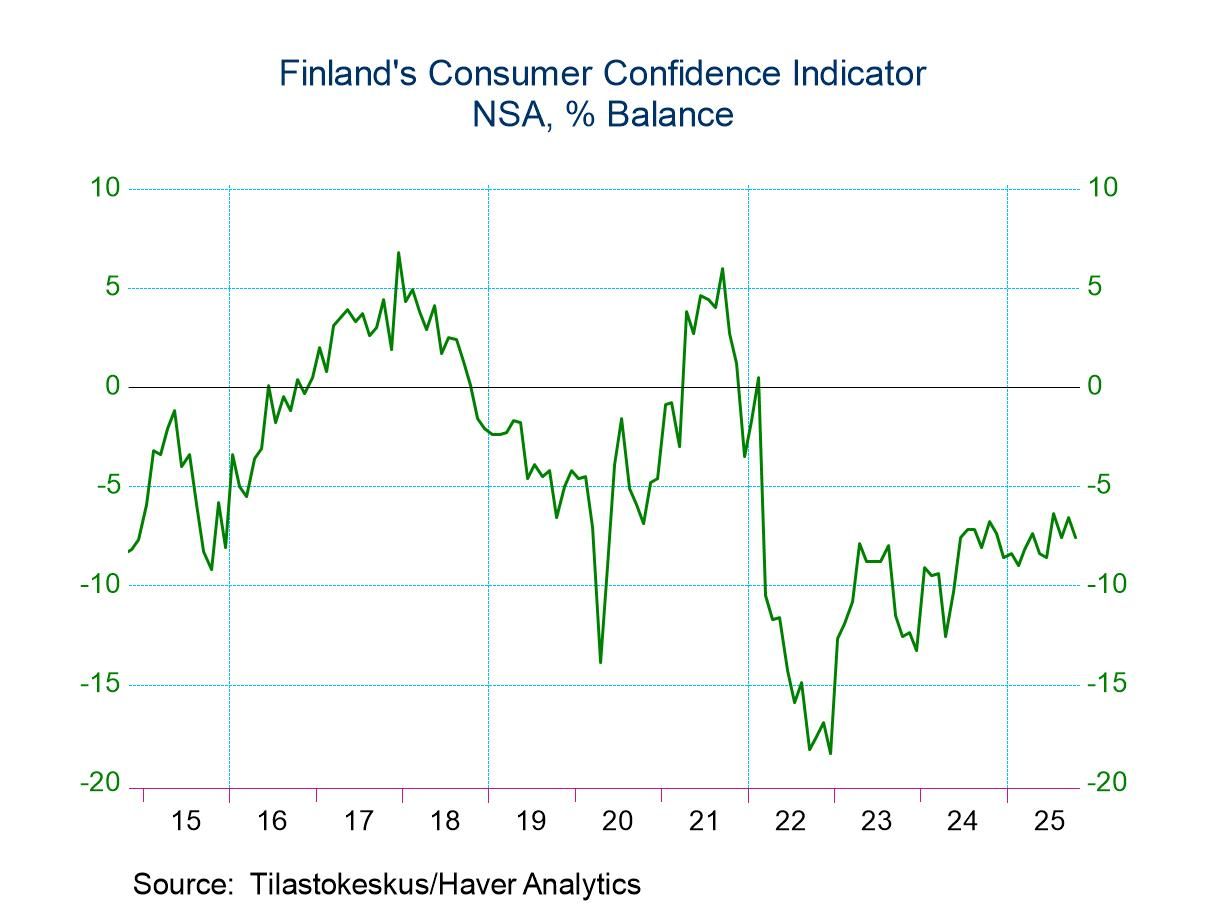 Global| Feb 15 2013
Global| Feb 15 2013U.S. Industrial Output Dips As Strength in Factory Sector Eases
by:Tom Moeller
|in:Economy in Brief
Summary
Industrial production slipped 0.1% last month following a 0.4% December rise, initially reported as 0.3%. (Data back through 2011 were revised.) A 0.2% gain had been expected in the Action Economics survey. Colder than normal [...]
 Industrial production slipped 0.1% last month following a 0.4% December
rise, initially reported as 0.3%. (Data back through 2011 were revised.) A
0.2% gain had been expected in the Action Economics survey. Colder than
normal temperatures caused utility output to jump 3.5% (6.0% y/y) last
month. The sizable decline in factory sector production of 0.4% (+1.7%
y/y) followed two months of sharp increase after Hurricane Sandy.
Industrial production slipped 0.1% last month following a 0.4% December
rise, initially reported as 0.3%. (Data back through 2011 were revised.) A
0.2% gain had been expected in the Action Economics survey. Colder than
normal temperatures caused utility output to jump 3.5% (6.0% y/y) last
month. The sizable decline in factory sector production of 0.4% (+1.7%
y/y) followed two months of sharp increase after Hurricane Sandy.
The decline in factory sector output reflected broad-based industry weakness. A 0.2% decline (+1.4% y/y) in consumer goods output was led by a 3.2% drop (+7.5% y/y) in motor vehicles & parts production. That was accompanied by a 0.9% decline (+4.3% y/y) in electrical equipment, appliances & components production and a 1.0% drop (+0.2% y/y) in chemical output. Computers & electronics production also fell 0.5% (+1.7% y/y). These declines were offset by a 1.5% rise (2.3% y/y) in machinery output and a 1.0% increase (-3.5% y/y) in apparel production. Manufacturing output excluding high tech and motor vehicles slipped 0.1% (+1.4% y/y) during January.
The capacity utilization rate fell to 79.1% in January versus 78.8% during all of last year. In the factory sector, the rate fell to 77.6% versus 77.3% during all of 2012. Manufacturing sector capacity rose 1.6% y/y.
Industrial production and capacity data are included in Haver's USECON database, with additional detail in the IP database. The expectations figure is in the AS1REPNA database.
| Industrial Production (SA, % Change) | Jan | Dec | Nov | Jan Y/Y | 2012 | 2011 | 2010 |
|---|---|---|---|---|---|---|---|
| Total Output | -0.1 | 0.4 | 1.3 | 2.1 | 3.8 | 4.1 | 5.4 |
| Manufacturing | -0.4 | 1.1 | 1.3 | 1.7 | 4.2 | 4.3 | 5.7 |
| Consumer Goods | -0.2 | 0.4 | 1.5 | 1.4 | 0.8 | 3.2 | 1.1 |
| Business Equipment | 0.0 | 0.3 | 3.1 | 6.8 | 8.2 | 10.5 | 8.3 |
| Construction Supplies | 0.0 | 0.9 | 2.5 | 2.1 | 5.2 | 5.3 | 3.8 |
| Materials | -0.2 | 0.5 | 1.0 | 1.7 | 5.1 | 3.5 | 8.4 |
| Utilities | 3.5 | -4.4 | 0.6 | 6.0 | -1.3 | -0.5 | 3.6 |
| Capacity Utilization (%) | 79.1 | 79.3 | 79.1 | 78.7 | 78.8 | 76.8 | 73.7 |
| Manufacturing | 77.6 | 78.0 | 77.3 | 77.5 | 77.3 | 75.0 | 71.3 |
Tom Moeller
AuthorMore in Author Profile »Prior to joining Haver Analytics in 2000, Mr. Moeller worked as the Economist at Chancellor Capital Management from 1985 to 1999. There, he developed comprehensive economic forecasts and interpreted economic data for equity and fixed income portfolio managers. Also at Chancellor, Mr. Moeller worked as an equity analyst and was responsible for researching and rating companies in the economically sensitive automobile and housing industries for investment in Chancellor’s equity portfolio. Prior to joining Chancellor, Mr. Moeller was an Economist at Citibank from 1979 to 1984. He also analyzed pricing behavior in the metals industry for the Council on Wage and Price Stability in Washington, D.C. In 1999, Mr. Moeller received the award for most accurate forecast from the Forecasters' Club of New York. From 1990 to 1992 he was President of the New York Association for Business Economists. Mr. Moeller earned an M.B.A. in Finance from Fordham University, where he graduated in 1987. He holds a Bachelor of Arts in Economics from George Washington University.








